The land and scenery around us is a true reflection of our past. It illustrates who we once were and represents our most treasured asset. Thus, the heritage we bequeath to future generations relies heavily on our awareness to preserve it in optimal conditions, even though this can often be challenging and costly.
Hispania Nostra is a non-profit organisation established in 1976 to appreciate the cultural and natural heritage of all Spain, which we sometimes overlook. The structures that conceal historical treasures often remain undiscovered, and it’s crucial to showcase them, for what is unknown cannot be preserved. They are, after all, the protectors of our heritage and play a pivotal role in warning about potential threats to many of these values.
In 2007, they made strides in identifying specific elements of cultural and natural heritage through a system of traffic lights that alerts us to the risks of loss faced by many of these sites if timely action is not taken. The so-called Hispania Nostra Red List serves as a participatory tool, allowing anyone to suggest the inclusion of a site, which a scientific committee then evaluates for consideration. Additionally, the organisation also provides a green list of locations that have experienced better fortune and are now safe, along with a blacklist featuring sites that have either vanished or whose values have deteriorated to the extent that recovery is impossible.
While exploring this list, I discovered several locations in northern Tenerife noted for their neglect and decay. Interestingly, out of the 19 sites identified in Tenerife, eleven are situated in the northern region, stretching from Tacoronte to Icod de los Vinos. I wanted to share this journey to deepen our understanding of history. Some of these sites were previously unknown to me, and learning about them has inspired further exploration into our roots.
Water Elevator of Gordejuela (Los Realejos)
This industrial site, known as La Gordejuela, hails from the twentieth century and was among the first installations to harness electricity for water-lifting in the Canary Islands. Presently, it lies in a state of neglect and decay, although it is regarded as one of the most stunning abandoned sites globally.
The water lift at Gordejuela was constructed in 1903 by the Hamilton Company, at the former site of Juan de Gordejuela Mill and adjacent to the waterfalls of the same name. The Hamilton Company, a British enterprise, acquired all shares of the Gordejuela Water Society in 1902 and initiated the construction of a pumping station to transfer water to the cliff-top, approximately 200 metres above sea level. The installation, designed by military engineer José Galván Balaguer, was supported by León de Torres y León Huerta. The engineering feat marked a significant milestone for its time, as it housed the first steam engine on Tenerife Island. It played a crucial role in the early 20th century for transporting water to the La Orotava Valley, utilising the water from the area’s springs.
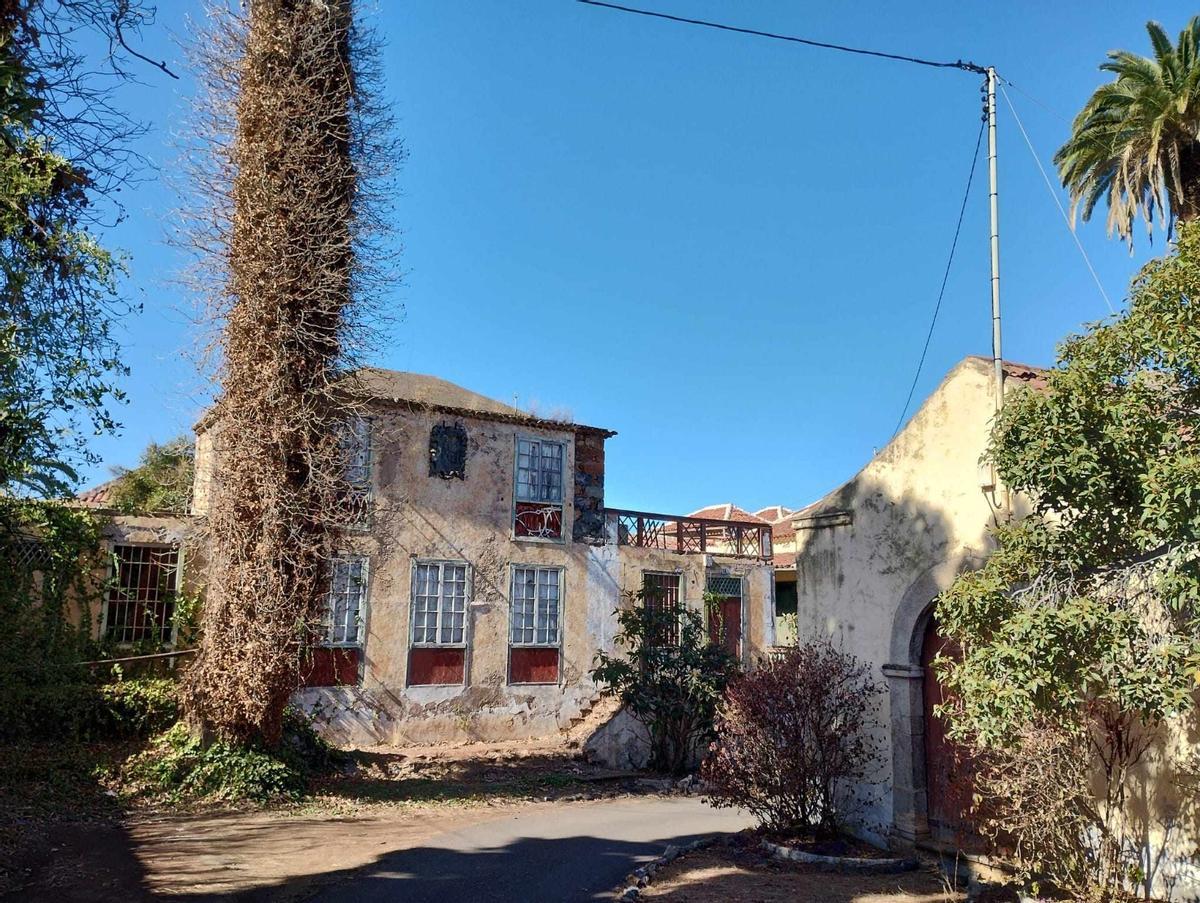
Hacienda de San Clemente. / Hispania Nostra
Hacienda de San Clemente (Santa Úrsula)
The Agricultural and Residential Complex was established in the 16th century by the Grimón family. During the 17th century, this line became associated with the Nava family, forming the Nava-Grimón Union and receiving titles such as Marquesses of Villanueva del Prado, Acialcázar, and Torrehermosa. The hacienda served as a residence for the Marquesses and their relatives, including notable figures like Claudio Grimón and Alonso de Nava, who primarily utilised it as a summer residence or during the harvesting seasons. In 1788, Alonso de Nava was tasked with managing the process of acclimating plant species from America, such as Tagaré, Chembe, and Tíndalo, conducting experiments at the hacienda.
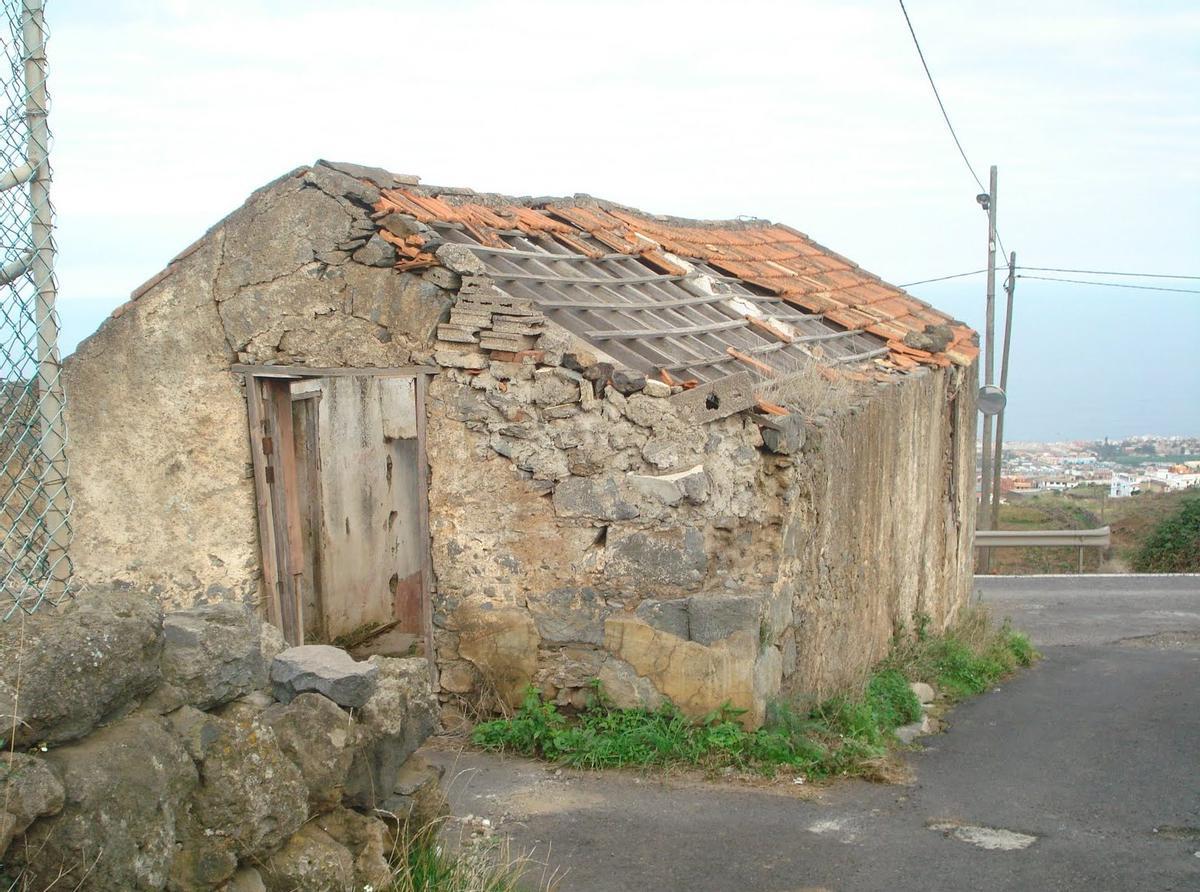
Piñera Mill / Hispania Nostra
Piñera Mill (Los Realejos)
Founded in 1922 by Daniel Pérez Cabrera, this mill was utilised for grinding grain and producing gofio, taking advantage of water power. By 1930, it was modified to generate electricity for a portion of the population in Realejo Alto.
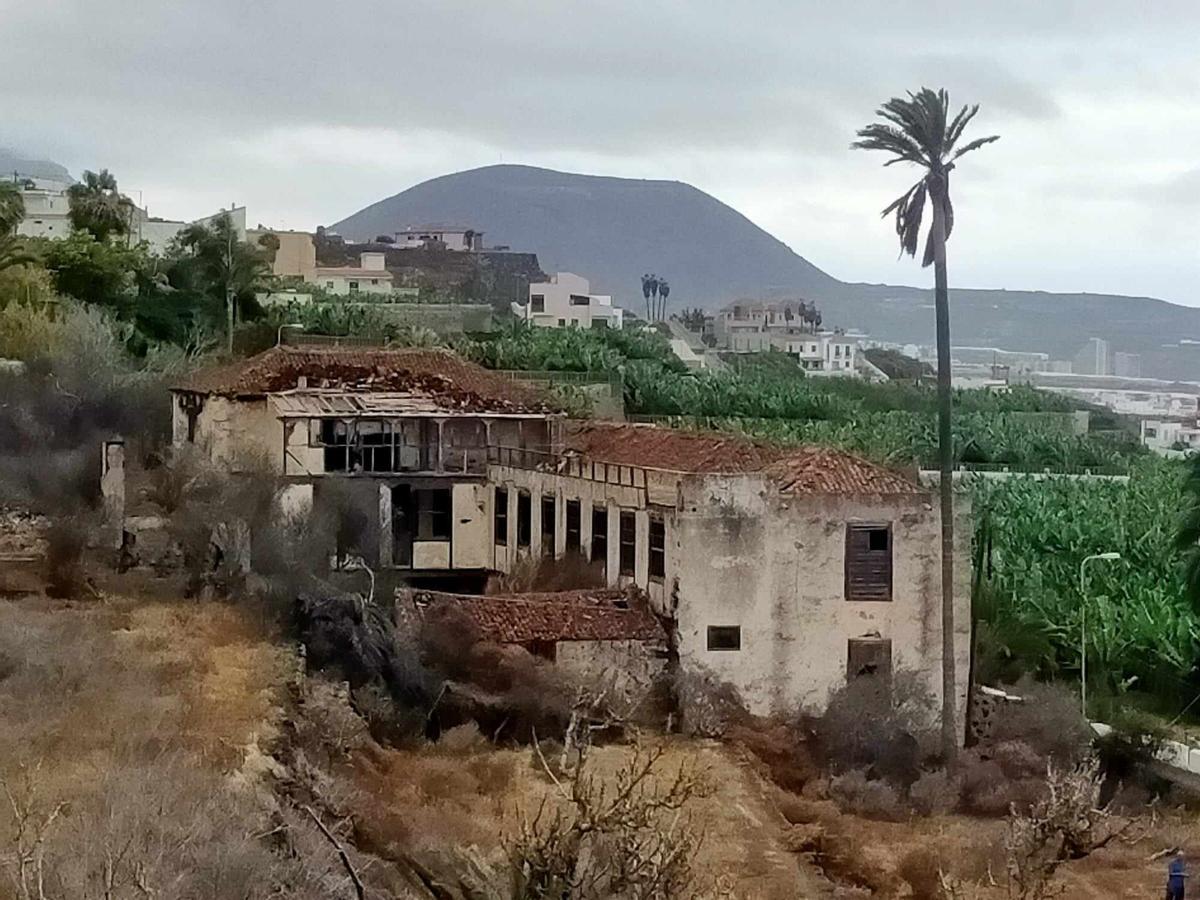
Treasury of Los Brieres / Hispania Nostra
Hacienda de los Brieres (Garachico)
This estate was established in the 17th century by Flemish merchants Conrado Brier and his father-in-law Juan Flaniel on the outskirts of the Villa and Port of Garachico, in a countryside setting where other estates belonged to the island’s aristocracy. The property is a prime example of a suburban estate, featuring a family residence with numerous irrigated plots that spread across the slopes of San Pedro. Throughout its history, it has been cultivated with vineyards, bananas, and various fruit trees. It survived the 1706 volcanic eruption and has remained with its descendants. The building overlooks the sea, situated along the Royal Camino that connects Daute and the Santiago Valley and guides to Isora.

Yellow House / The Day
Yellow House (Puerto de la Cruz)
Constructed in the 18th century, the Yellow House was the premier centre in the world for primate studies and played a significant part in Gestalt psychology. Despite its historical and scientific significance, it currently exists in a state of irreversible decline, with demolition works inside and shoring barely keeping it stable.

Hacienda La Gorvorana / Hispania Nostra
Hacienda La Gorvorana (Los Realejos)
This magnificent 17th-century Canarian house exemplifies traditional architecture. Captain Don Francisco Gorvalán, who supported Fernández de Lugo during the Conquest of Tenerife, was awarded these lands which he cultivated, giving rise to its name. In 1699, a Mayorazgo was established by Juan de Grimón, Mrs. de la Gorvorana, later inherited by her daughter María López de Vergara y Grimón, and managed by her brother Baltasar de Vergara y Grimón, alongside the Marqués de Acialcázar, who constructed the building. It then passed down by inheritance to the Marquise de Breña and subsequently through marriage in 1765. In 1877, it was sold to the Leal brothers, Canarians returning from abroad. In the latter half of the 20th century, the hacienda began losing land to new urban developments.
The hacienda was overseen by stewards appointed by its proprietors. In 1757, Matías de Gálvez, who would later become the Viceroy of New Spain and father of Bernardo, was appointed to administer the estate.
of New Spain and an active participant in the American War of Independence supporting the colonial rebels. He was also the sibling of José de Gálvez, the architect behind the General Archive of the Indies.
Supplemented by abundant irrigation waters -that arrived via Atargeas de Arduramas-, this estate was deemed during the 18th century to be the most lucrative property in Realejo de Arriba.
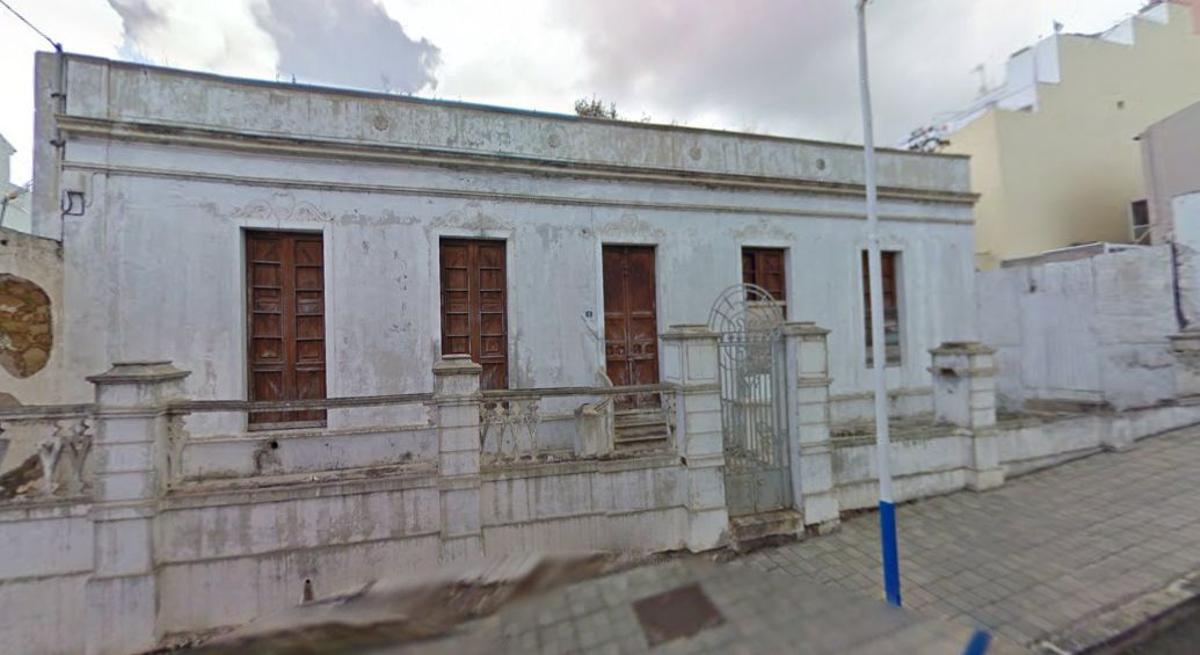
Agustín Espinosa’s Family Home / Hispania Nostra
Agustín Espinosa’s Family Home (Los Realejos)
Agustín Espinosa García (1897-1939) was a Canarian poet associated with the Surrealist Group of Tenerife and a pivotal figure in the avant-garde scene of the islands, having a significant impact as the pioneer of modern prose in the Canary Islands throughout the 1920s and 1930s. Espinosa passed away in this house, where the Espinosa siblings were nurtured, and during the summer months, they prepared recitals, small theatrical plays, and gatherings to be showcased at the nearby Cine Realejos theatre.
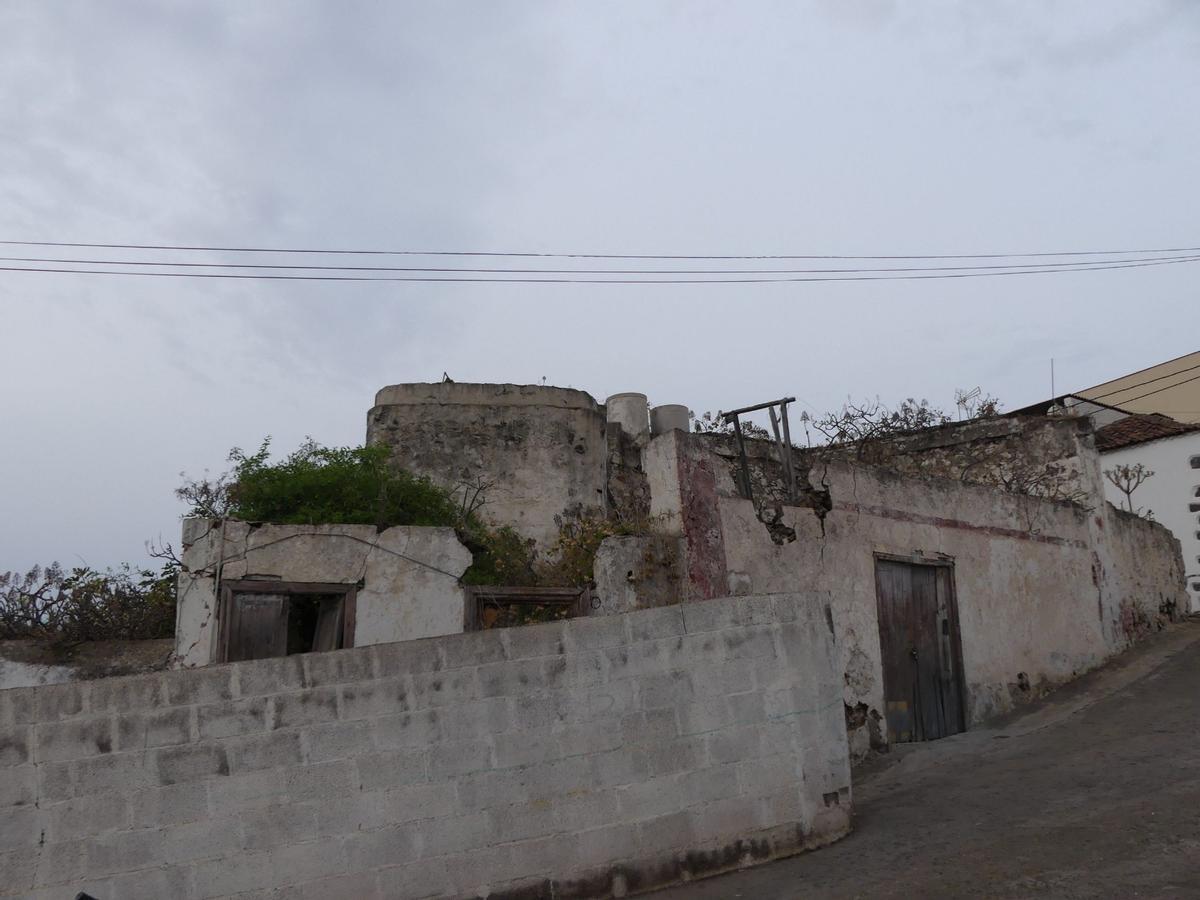
Water Mill at Plaza de las Angustias / Hispania Nostra
Water Mill at Plaza de las Angustias (Icod de los Vinos)
This water mill, situated in the vicinity of the Hermitage of Our Lady of Angustias in Icod de los Vinos, is a seventeenth-century hydraulic structure. It forms part of a collection of mills that utilised the waters of the Caforiño ravine for grinding grain, representing one of the key aspects of the industrial heritage in the region.
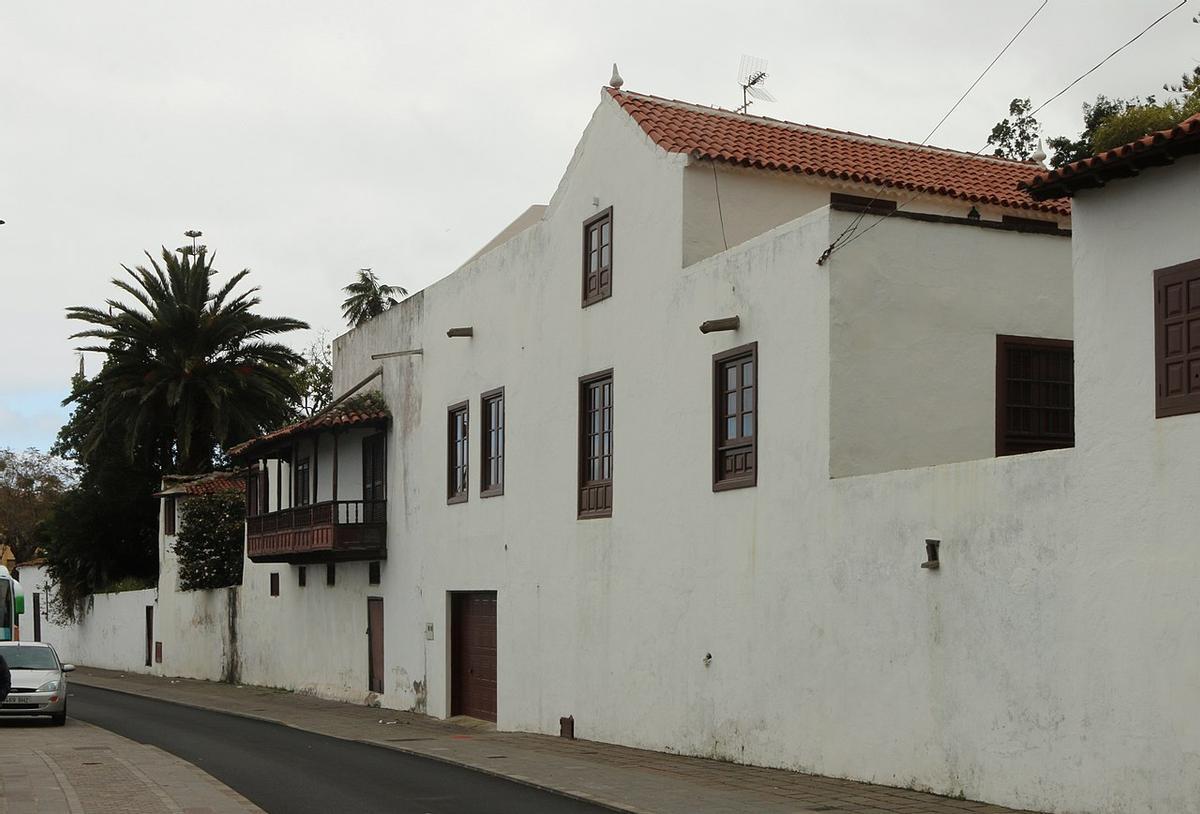
Princes’ Treasury / Hispania Nostra
Princes’ Treasury (Los Realejos)
The Hacienda de los Príncipes, situated in Bajo Realejo, stands as one of the most iconic structures of Civil Heritage in the Realejos. Founded by Alonso Fernández de Lugo following the conquest of Tenerife, this estate was the core around which the area’s initial urban settlement emerged. It housed the island’s first sugar mill and an array of architectural features of interest, including mills, lagares, and gardens. In 2009, it received a declaration of cultural significance with monument status.
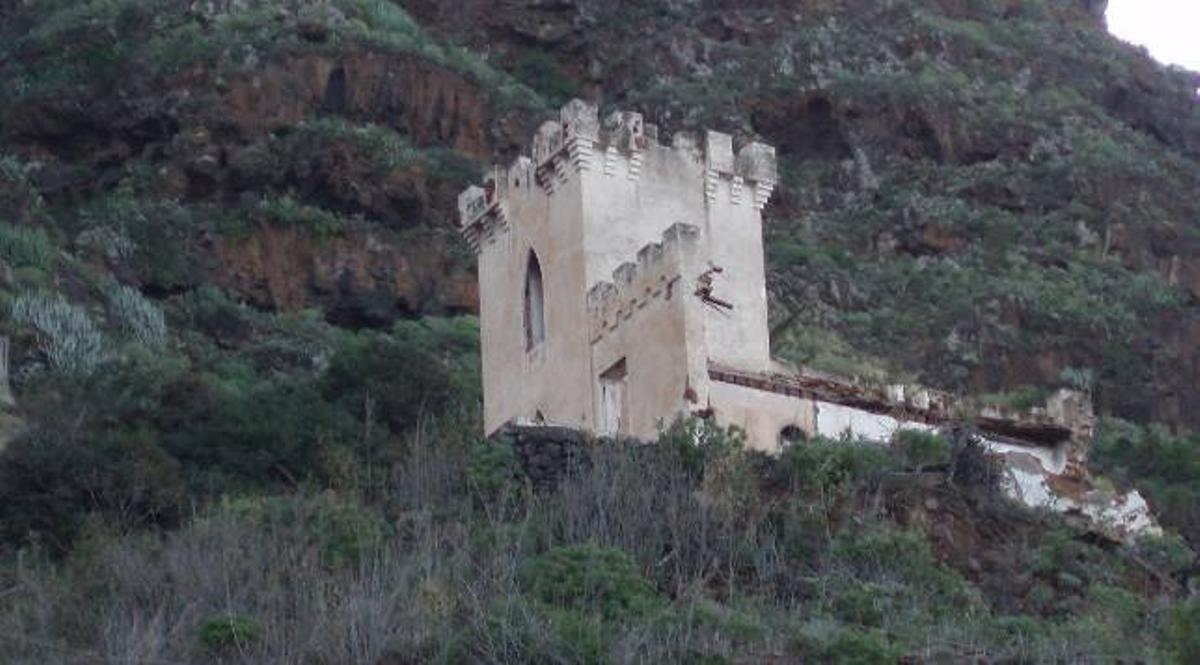
Guayonje Castillete / Hispania Nostra
Guayonje Castillete (Tacoronte)
Perched on the Guayonje cliffs, this historicist construction emulates a coastal fortification. Erected at the turn of the 20th century by Antonio Domínguez de Mesa, it served as a recreational villa for his family. The property is distinguished by its tower that commands the landscape and architectural elements like pointed arches that lend it a medieval ambiance. The surrealist painter Óscar Domínguez, son of the owner, spent considerable time at this estate.
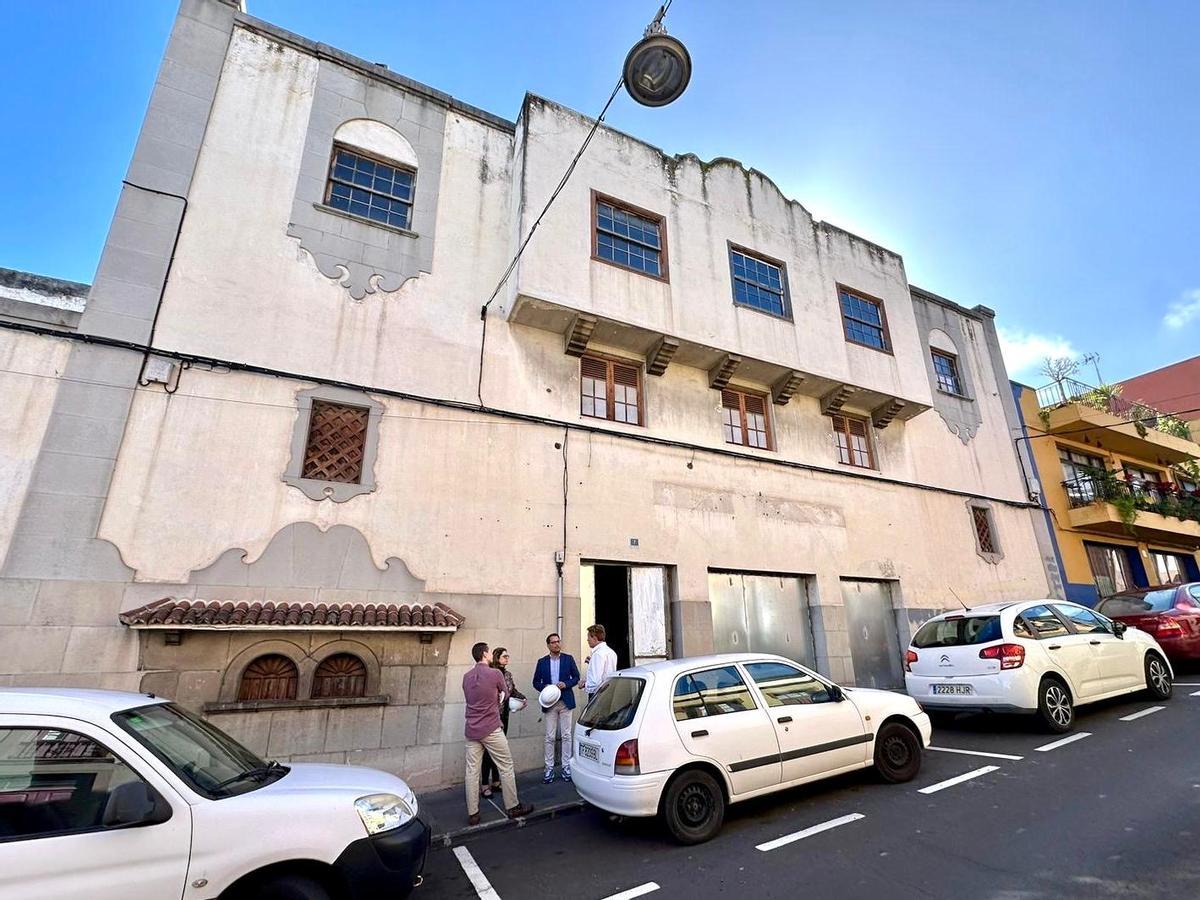
Cine Theater Viera and Clavijo / The Day
Theatre-Cine Viera and Clavijo (Los Realejos)
Opened in 1947, the Theatre-Cine Viera and Clavijo was crafted by the architect José Enrique Marrero Regalado, renowned for projects like the Basilica of La Candelaria and the headquarters of the Cabildo de Tenerife. This building exemplifies the Neocanario style, characterised by elements such as arches, cassetones in the roofing, and a façade adorned with half-point arcades framed in stone. Last January, the mayor of Los Realejos, Adolfo González, announced that the local council had commenced procedures to formalise the acquisition of cinema Viera from its current owners, the CajaCanarias Foundation.
The local council’s aim is to reclaim the property for cultural purposes, considering the conditions posed by its present state of conservation, the technical feasibility of its rehabilitation, and the definition of intended uses, alongside adapting it to current regulations regarding buildings of artistic and cultural relevance and preserving heritage elements in historical contexts, as it lies within the historical area of Realejo Alto.
This establishment has been unused for decades, resulting in significant deterioration; however, the property has undertaken various specific maintenance initiatives to prevent further decline, addressing the requirements set forth by the Los Realejos City Council regarding health and safety matters, having consistently monitored its condition.















